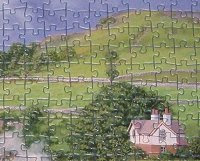 Another of Don's great songs is 'And the Spirit Sings', it's one of my all-time favourites and it carries a gentle but strong message that meeting in freedom can be a very special experience because it causes the Holy Spirit to sing. That has been true in my experience, and in Frank's, and in Don's, and in the lives of so many of the people I know and love.
Another of Don's great songs is 'And the Spirit Sings', it's one of my all-time favourites and it carries a gentle but strong message that meeting in freedom can be a very special experience because it causes the Holy Spirit to sing. That has been true in my experience, and in Frank's, and in Don's, and in the lives of so many of the people I know and love.To be in a meeting at home, where Yahshua is welcomed along with everyone else, that is a supreme privilege.
Meetings like this have been the absolute pinnacle of my life - and that's no exaggeration! What can equal his palpable presence amongst his people? He is enthroned in the splendour of holiness yet he is intimately one of us - and the Spirit does indeed sing! Wonderful, wonderful times together over and over again. (Of course it's not being at home that makes this possible, but our freedom in one another's presence and the Lord's freedom amongst us.)
'And the Spirit Sings' can be found on Don's album 'Come Away'. If you like Don's style and you've never heard this particular track I strongly recommend you buy 'Come Away', the other songs are great too. The CD's available on Don's website. As I write, the homepage provides 'He's Alive' as a free listen. Go and hear it! Maybe Don will consider putting 'And the Spirit Sings' up there too - how about it, Don?
If you want to catch the aroma of meetings of this kind (just a hint of what they're like) read the notes on some of our past meetings. But like a great dish, a meeting in which he's powerfully yet gently present is something that can't be fully appreciated without tasting it.






